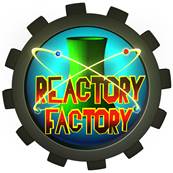STEM Education and the White House Science Fair Assembly
Originally written: By Moriah Balingit and appeared in the Washington Post STEM Science Education
Jacob Leggette said he believes it is important that children have a say in their science education. That’s why the 9-year-old budding engineer from Baltimore fearlessly approached President Obama at the White House Science Fair and asked: “Do you have a child science adviser?”
Obama does not have a child science adviser, but in a speech at the fair last month, he indicated that he was taking Jacob’s idea to heart.
“Jacob . . . had a very good idea,” Obama said, after lauding his project, a collection of items he built on a 3-D printer. “We should have a kid’s advisory group that starts explaining to us what’s interesting to them and what’s working, and could help us shape advances in STEM education.”
[This 9-year-old wants to be the first White House child science adviser]
Inspired by Jacob’s idea, the White House created a Web page to allow children to share their thoughts and views on science, technology, engineering and math education. The site is set to go live Thursday at WH.gov/KidScienceAdvisors.
“President Obama wants to hear from YOU – kid scientists and innovators across the country – about what we can do to help shape the future of science, discovery, and exploration,” the White House said on its blog. “Whether you care about tackling climate change, finding a cure to cancer, using technology to help make people’s lives better, or getting a human to Mars, we can’t wait to get your input!”
The form asks children for their ideas on STEM: “If you could pitch the President on one idea on how we could make our country work better using science and technology, what would you say?”
The White House has sought to increase the emphasis on STEM in schools, throwing its weight behind initiatives to hire more science and math teachers.
Jacob, who is home-schooled in Baltimore, said he was thrilled that his inquiry inspired action in Washington.
“It sounds like it’s going to be great,” Jacob said. “I was so happy.”
Jacob said he thinks that adults sometimes underestimate children, but they have valuable lessons to share. He said he believes that children who are intimidated or disinterested in science need the opportunity to try out different kinds of hands-on science.
Jacob first experimented with a 3-D printer at the Digital Harbor Foundation in Baltimore, which has youth technology programs. He decided he wanted one and wrote to companies to see if they would send him a printer in exchange for him writing reviews of their products from a child’s perspective. One company agreed, and since then, he has been creating miniatures and models on his own printer at home.
He earned a trip to the White House Science Fair in April, showing off his creations, including a model of the White House, directly to the president.
His mother, Stephanie, said she believes Jacob shows that children can have valuable input on important subjects.
“If my 9-year-old gave the president an idea and it went this far, then any 9-year-old who looks around and sees something they want to improve, they have something to say,” Stephanie Leggette said.
Originally written: By Moriah Balingit and appeared in the Washington Post STEM Science Education
